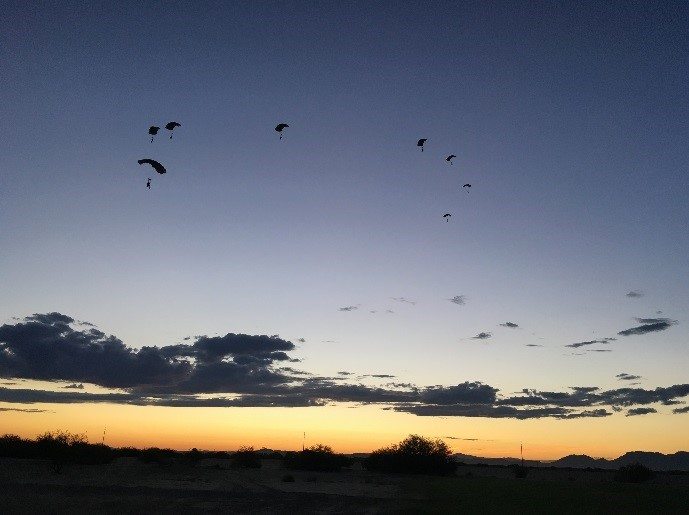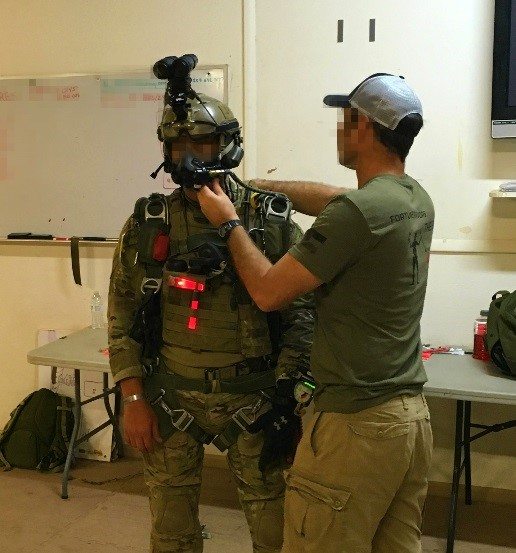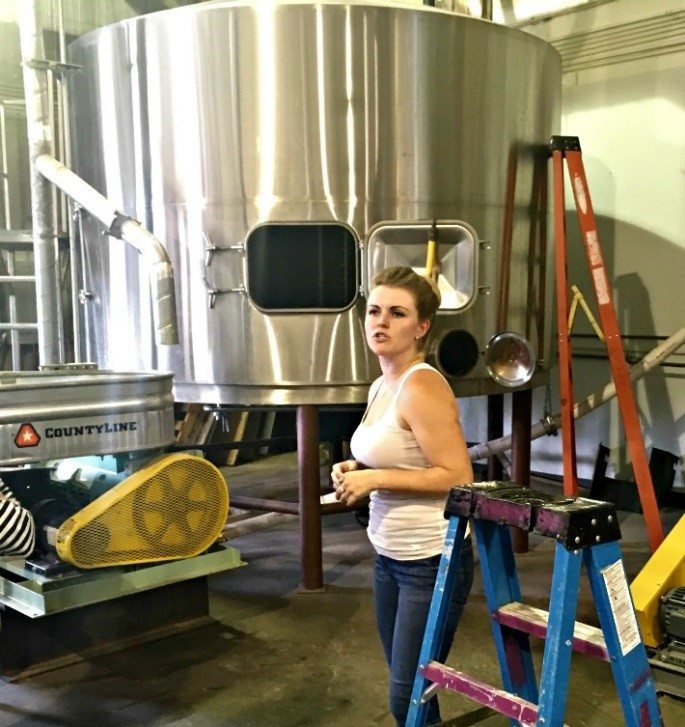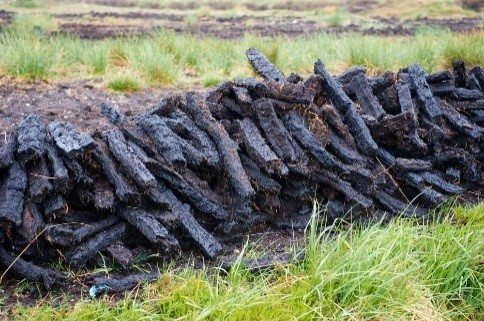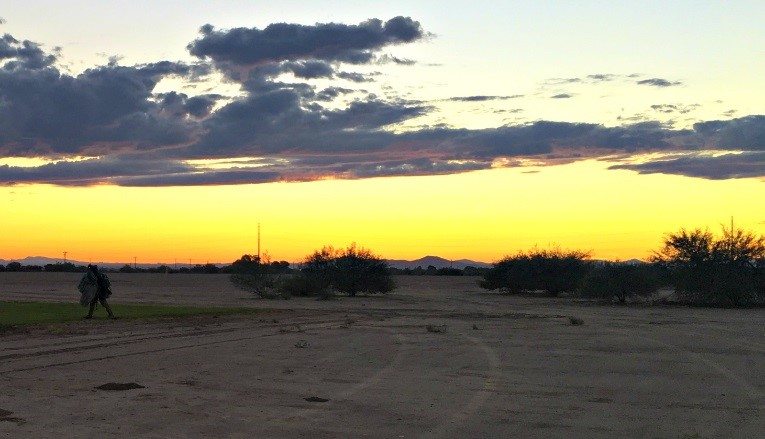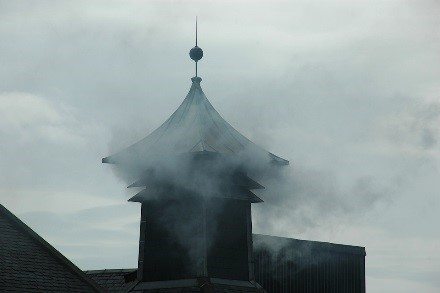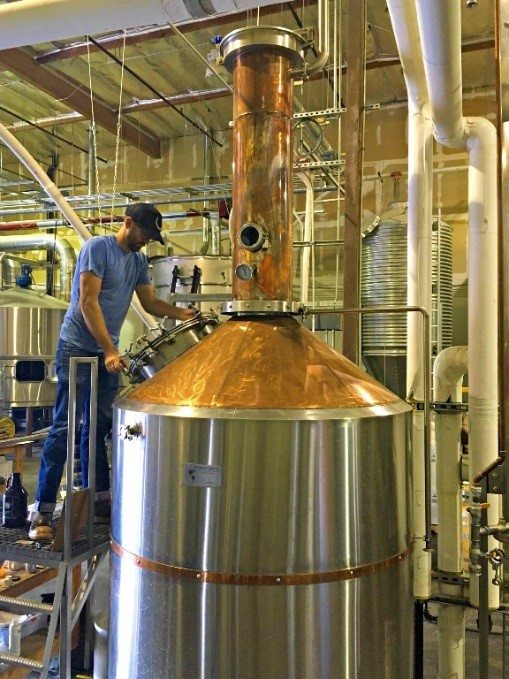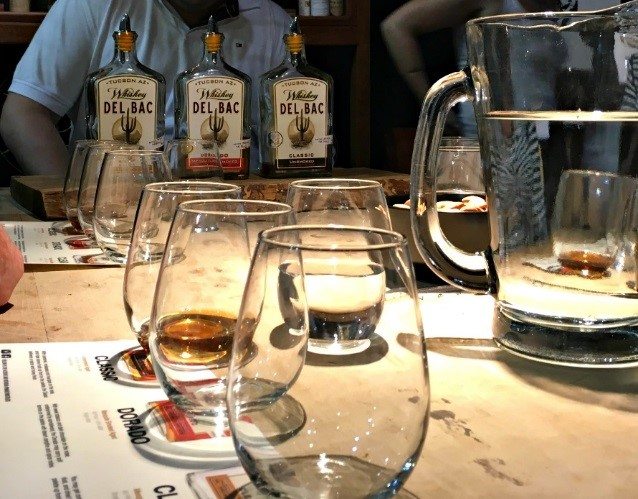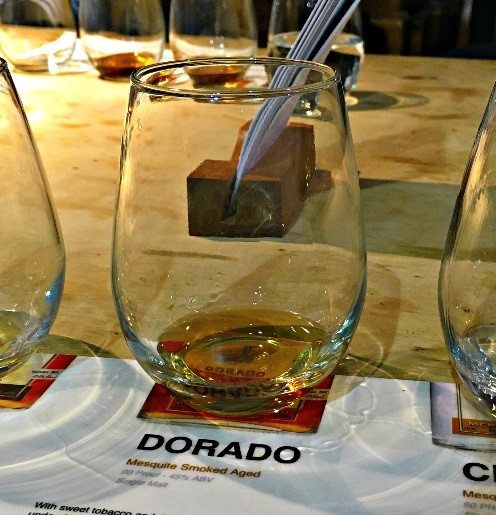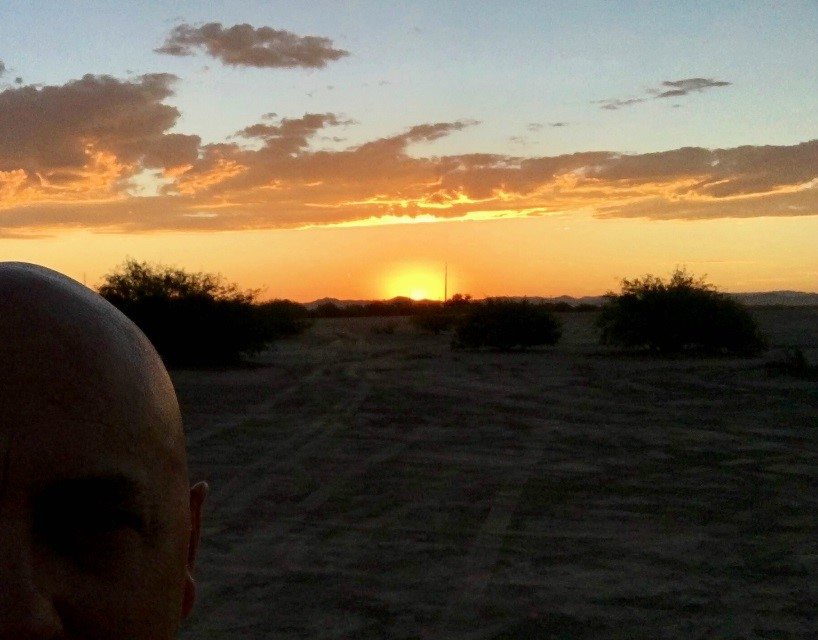I’ve only been into whiskeys and scotch’s for about the last ten years or so, that said, I’m hardly a connoisseur but something more along the lines of one who appreciates well-made things. Recently a good friend of mine, still active and in an Operational Detachment Alpha (ODA), with whom I worked extensively throughout the Middle East, introduced me to a Special Forces friend of his who is a true whiskey diehard. He is preparing to write a book about distilleries in and around Maryland and their history. This is his story and experience with whiskeys I hope you enjoy it.
Being military I travel fairly often and when I travel I always find time to stop into the local craft whiskey distilleries. This summer I was at Sky Dive Arizona in Eloy, Arizona for some Military Freefall training. The first week we did mostly day jumps and the heat of the Sonoran Desert was unbearable. The second week we transitioned to night jumps which, although causing a few more bumps and bruises on the landings, the evening and morning temperatures were delightful. This also left me with some free time in the afternoons to seek out a distillery that had recently gained my attention.
About two hours away in Tucson was Hamilton Distillers. I had been wanting to visit this distillery since I first heard about a single malt they make, or rather the way that they make it. You see, Hamilton Distillers is one of the very few distilleries in the United States, or the world for that matter that malt their own barley. That alone makes this distillery worth a visit but there is something more to the way they prepare their grain for distilling that has me slightly skeptical.
Enterprise had upgraded me to a Chrysler 300 when I flew into Phoenix and I drove it like a rental across those open desert roads on the way to the distillery. The scenery of the endless skyline was memorizing. I had been seeing these mountains and plains that I am now driving through from 12,000 feet in the air the week prior and I still can’t get enough of this view as I careen through the cuts and open it up in the straights. I made it to Tucson in record time.
As I walked through the back door of the distillery I could smell the whiskey mash fermenting; I always love that smell. Inside I met Dale from the distillery and a few others that were there to take a tour. Introductions made, Dale began her usual spiel explaining the basic and necessary info about what whiskey is and how it’s made. I’ve heard countless different versions of this talk and I always like to listen and see if I can find a different way to explain something about the process. But what I was really interested to hear was soon coming. Dale explained the process to our small group as we walked the distillery floor. Then in the back, near where I first entered, she directed our attention to a large stainless steel thing that looked like a 1960’s NASA space capsule. This was the custom-built device that malts the barley. And exactly how the drying takes place is what I was so interested in.
First a little background of how conventional Scotch whisky malting takes place. The traditional method to make a whisky In Scotland calls for the barley grain to go through a process called malting. That means that they wet the barley seeds and let them start to sprout. When that happens the seeds start to convert their starch into sugar which is necessary for a later step in the whisky making process where the yeast eats the sugar and excretes alcohol.
As the seeds sprout the process has to be stopped at just the right time and the grain dried so that it can be ground and then fermented. In the old days they would light a fire in the floor below to dry the grain and since wood is scarce in Scotland they would burn dry peat. Peat is like mud found under the peat bogs in the marshes but it is actually vegetable matter from the eons of growing and decaying peat moss. So when you cut it into brick sized pieces and dry it out, it will burn like charcoal.
Burning this fuel under the wet grain on the cold wet shores of Scotland, the embers would smolder and smoke as it dried the seeds. That smoke would permeate into the grain and would then in turn be transferred into the final whisky thusly giving Scotch whisky its tell-tale smoky flavor. And not just smoke, but peat smoke that you can taste. It’s a taste that’s unique to whisky coming from Scotland and when you taste it you can imagine the cold wet days that are so typical in that place as the distillery workers made that whisky. Scotch whisky fanatics around the world are now drawn to that smoky flavor that was in the beginning not intentional at all.
Terroir is the term that wine enthusiasts first used to describe this kind of relationship between the taste of a drink to the land that it comes from. No other whiskey has a greater terrior then scotch whisky from the shores of Scotland. Stephen Paul, the founder of Hamilton Distillers, had a thought about this concept of terroir. Scots burn peat because it’s their local fire wood, what if he were to make a whiskey, Stephen thought, and use the local Arizona wood to dry his barley. Perhaps he could create a whiskey terroir of his own, or of Arizona’s own. And it so happens that the local flora in the Sonoran desert of Arizona is one of the most fragrant and savory smelling smoke producing woods in America, mesquite.
The week prior I had been parachuting into the open desert. The sun and heat were oppressive and as I would bundle my chute and wait for other members of my team to make their way over to me I would seek the shade of the short bushy mesquite trees. These trees, that are such a bane to us as we’re still airborne and trying to find a good place between them to land our canopies hoping to not have to tangle with the thorns they bear, would be the only source of relief from the sun once on the ground.
Now I am about to taste the effect on whiskey this wood has to offer. Tasting mesquite is nothing new as it’s one of the most popular woods to use in barbecue smokers to add flavor to meat. But to add this smoky fragrance to a whisky is an altogether new taste. And yet it is an age-old process and an age-old concept and the truest sense of whiskey terroir in the manor that Stephen Paul is using it.
Dale went on to explain how this “malting machine” works. Unlike the malting barns in Scotland that would emit the peat smoke though the doors and windows and in later times, rooftop pagodas as the grain is dried, modern times require the need to be more efficient and environmentally conscious with the smoke that is created for the process. This large stainless steel contraption is quite unique. Partly designed by Stephen, it is a one-stop-shop for malting and smoking grain. In this tank the grain would be wet to the correct degree through internal water nozzles and the seeds would then be allowed time to sprout. As this process takes place internal augers would gently turn the mush to make sure of the right consistency and that oxygen reaches all of the sprouts. Once this part of the process has achieved the desired result and the starches have been duly converted to sugar the warm mesquite smoke is fanned into the tank and the final part of the malting process takes place as the smoke dries the sprouting seeds and imparts its smoky flavor into the grain and ultimately the whiskey.
After ogling the malting contraption we looked over the other facets of the distillery to include the still. This still looked a lot like a pot-column still on the outside. It was quickly pointed out that in spite of its outward appearance it was in fact a pot still only. This still was made by craftsmen that only make pot-column stills. But Joseph wanted a pot still, like the type the traditional Scotch single malts were created in, and not a column still like in which many modern whiskies are produced. So he special ordered this still with no internal plates that would normally be in the vertical cylinder column on the still top, effective making it a pot still only and therefore more true to the traditional Scottish methods.
After the tour was complete we settled around a tasting table to sample the three whiskies made here. All of these whiskies bear the name Del Bac. The first taste was the Del Bac Classic Unsmoked, a classic American Single malt. All of Hamilton’s whiskies are made of 100% barley and are double distilled in their custom 500 gallon pot still. This particular whiskey is malted in-house but is dried with hot air and not smoke so it does not have the nuances of the mesquite smoke.
The second whiskey we tasted was the Del Bac Dorado. This is the mesquite smoked single malt that I was here to taste. At first sniff I could smell the barley and the wood but not the smoke so much. Ironic as it may sound, it’s always hard to do a fair tasting in a distillery. It’s almost never a really good place to conduct an in-depth tasting with all of the interfering smells from the fermenting, machinery, ceiling fans and loud noises of forklifts and pumps. I generally enjoy my small samples provided and try not to make too strong of an opinion until later when I can have a more relaxed and in-depth taste from the bottles I take with me.
This was what I expected to do when I took my first smell from the glass of Del Bac Dorado and I was not surprised that I didn’t really smell the smoke so much. I then added a little bit of water as I always do when I sip a good whiskey, about a teaspoon, gave it a swirl in the glass and then went in for another smell. Bam! Like landing a full speed parachute face-first into a mesquite tree in the pitch dark, I got hit by a powerful savory aromatic smoke. Wow, I thought as I brought the glass to my face and cupped my hand over the top of the glass and my nose like it was my oxygen mask trying to capture all of the nuances of the aroma of this incredible whiskey. There was chocolate, chili pepper spice and a savory saltiness beginning to develop on subsequent sniffs.
I took another smell and tipped the glass back in one smooth motion to take my first sip and the mesquite smoke continued to deliver. There are times when a whiskey can have a smell and a taste that lack correlation; not in this case. The palate of this single malt was in perfect sync with the nose as it delivered more briny mesquite barbeque smoke and semi-sweet chocolate, tobacco and suede leather, and a wonderful sweetness that stepped in and out on the very tip of my tongue. There were some deep tannins from the influence of the barrel wood that might make this whiskey a challenge for the novice but offer rewards for the whiskey enthusiasts.
I was finishing my first dram of Del Bac Dorado and already knew that this was a good whiskey; one worthy of reflection. I went on to taste their Del Bac Clear, the unaged version of the same whiskey. I found it very interesting in that this unaged whiskey has much less mesquite smoke presenting alongside of the green pare and unripe fruit that is so wonderfully common in unaged spirits.
In this age of so many new start-up craft whiskey distilleries across the country, quite often I find new distillers out there trying to create “something new” in an attempt to set themselves apart and gain some notoriety. I am always skeptical of any distiller that comes out of the starting gate with a new-fangled idea and side-steps the notion of just making a down the middle solid whiskey. It was this skepticism that I came to Hamilton Distillers with this afternoon. My thoughts were “who is this guy, Stephen Paul, to take an age-old concept of making Scottish single malt whiskey and warp it into some kind of Southwest, Tex-Mex mutation, flavoring the whiskey with BBQ smoke”. My mind is changed. This is a solid single malt whiskey. It is made in the same spirit and methods of a Scottish Islay single malt and for the same reasons. There is nothing new-fangled or new-aged about this whiskey, the only thing new about it is the location that it is produced, the Sonoran desert. Once that is accepted all else falls comfortably into place.
As I descended from 18,000 feet that evening making one final jump through the darkness and landed my canopy just before sunrise, making sure to steer clear of the looming thorn laden mesquite trees, I could only think of what a spectacular Sonoran terroir these obstacles impart on this local spirit, Hamilton Distillers Del Bac Dorado mesquite smoked single malt whiskey.
TW has been a member of the SOF community for close to three decades. As a longtime whiskey enthusiast and a member of several whiskey clubs over the years TW has been organizing and presenting whiskey tastings and events for Whiskey America LLC. In the last several years TW has taken to writing about his adventures with his passion for fine whiskies. Joining together the whiskey and the environment, TW focuses our attention to often overlooked moments, slowing down time and exploding out details to bring us into the experience. TW shares his experiences on www.whiskey-america.com and can be found posting his frequent visits to distilleries and events at www.facebook.com/whiskeyamerica1 . E-mail him at TW@Whiskey-America.com

